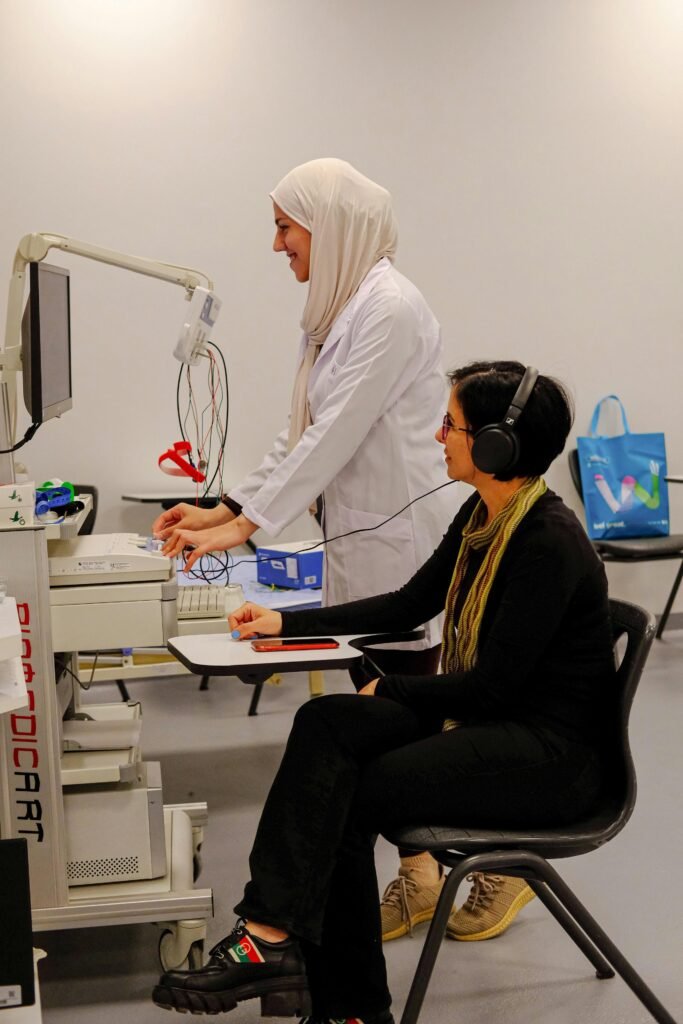Imagine typing away on your keyboard, only to realize that some keys are sticking or not working properly. Frustrating, right? Well, fret not! In this article, we will share some essential tips for keyboard maintenance that will help keep your keyboard in mint condition. From regular cleaning to proper handling, these easy-to-follow tips will ensure that your keyboard and touchpad continue to function flawlessly, allowing you to work or play without any hiccups. So, let’s dive in and discover how to keep your keyboard in tip-top shape!
Regular Cleaning
Tools needed
To keep your keyboard and touchpad in top shape, you’ll need a few basic cleaning tools. Gather a microfiber cloth, compressed air, cotton swabs, and a small brush. These items will help you effectively remove dirt, dust, and grime from your keyboard and touchpad.
Cleaning the keys
To clean the keys, start by turning off your device and unplugging the keyboard, if applicable. Gently wipe the keys with the microfiber cloth to remove any loose dirt or debris. For stubborn stains, use a cotton swab dipped in isopropyl alcohol to gently clean the affected keys. Make sure to avoid excessive moisture and be gentle to prevent any damage to the keys.
Cleaning the touchpad
Next, let’s tackle the touchpad. Use the microfiber cloth to wipe away any smudges or fingerprints. For deeper cleaning, lightly moisten the cloth with water or a gentle touchpad cleaner, and gently wipe the touchpad surface. Be careful not to apply too much pressure, as this could cause damage.
Cleaning the gaps and crevices
Don’t forget to clean the gaps and crevices between the keys. Dust and crumbs tend to accumulate in these hard-to-reach areas. Use the small brush or compressed air to dislodge any debris, and then use a cotton swab to remove it. Be thorough but gentle to avoid pushing the dirt further into the keyboard.
Cleaning the exterior
Lastly, clean the exterior of your keyboard. Take a damp cloth, wring it out well, and wipe the entire surface of the keyboard. Dry it with a clean cloth to remove any excess moisture. This step will help maintain the overall cleanliness and appearance of your keyboard.
Avoid Eating or Drinking Near the Keyboard
Why it’s important
While it may be tempting to have a snack or drink at your desk, it’s best to avoid eating or drinking near your keyboard. Crumbs, spills, and sticky residue can find their way into the keys, causing damage and impairing functionality.
Potential damage caused by food and drinks
Food particles and liquid spills can be particularly harmful to your keyboard. Crumbs can get stuck beneath the keys, leading to stuck or unresponsive keys. Liquid spills can seep into the inner workings of the keyboard, causing irreversible damage to the circuitry.
Tips for keeping food and drinks away
To protect your keyboard, designate a separate area for eating and drinking. Keep your snacks and beverages at a safe distance from your keyboard, ideally in a separate location altogether. Consider using a spill-proof container or a covered cup to minimize the risk of accidental spills.

This image is property of images.pexels.com.
Proper Hand Hygiene
Washing hands before use
Before using your keyboard, it’s important to practice proper hand hygiene. Wash your hands thoroughly with soap and water to remove any dirt, oils, or germs that can transfer onto the keys. This simple step can help maintain a clean and hygienic keyboard.
Avoiding excessive hand creams or oils
While it’s essential to keep your hands moisturized, excessive hand creams or oils can leave residue on the keys and touchpad. This residue can attract dust and grime, leading to a dirty and sticky keyboard. Opt for fragrance-free or fast-absorbing hand creams to minimize any potential buildup.
Using hand sanitizers properly
Hand sanitizers can be a convenient way to keep your hands clean, especially when soap and water are not available. However, it’s important to use them properly to avoid damaging your keyboard. Allow the sanitizer to fully dry before using your keyboard to prevent any residual moisture from seeping into the keys.
Protecting from Dust and Debris
Using keyboard covers
Keyboard covers are an excellent investment to protect your keyboard from dust and debris. These covers act as a barrier, preventing particles from settling between the keys. Make sure to choose a cover specifically designed for your keyboard model for a snug fit.
Regular dusting
Regular dusting is crucial to maintain a clean keyboard. Use a soft brush or compressed air to gently remove any dust or debris from the surface and crevices of your keyboard. Be thorough but gentle to avoid causing any damage.
Using compressed air
Compressed air is an effective tool for cleaning hard-to-reach areas of your keyboard. Use short bursts of air to dislodge dust and debris that may have accumulated between the keys. Hold the canister upright and use it in a well-ventilated area to avoid inhaling any airborne particles.
Avoiding strong cleaning agents
When cleaning your keyboard, it’s best to avoid using strong cleaning agents or solvents. These harsh chemicals can damage the keys and the delicate components inside the keyboard. Stick to mild cleaning solutions, such as isopropyl alcohol or a mixture of gentle dish soap and water, when necessary.

This image is property of images.pexels.com.
Preventing Liquid Spills
Keeping drinks at a safe distance
To avoid liquid spills, it’s important to keep your drinks at a safe distance from your keyboard. Accidents can happen, and a spill near your keyboard can lead to serious damage. Create a designated space for your beverages, such as a side table or coaster, away from your keyboard to minimize the risk.
Using spill-resistant keyboards
Consider investing in a spill-resistant keyboard to provide an extra layer of protection against liquid spills. These keyboards are designed with special coatings or membranes that prevent liquids from seeping into the circuitry. While not completely foolproof, spill-resistant keyboards can greatly reduce the risk of damage.
Immediate actions in case of spills
If a liquid spill does occur, act quickly to minimize potential damage. Immediately unplug the keyboard and gently tilt it to allow the liquid to drain away from the keys. Use a clean cloth or paper towel to soak up any excess liquid. Avoid pressing the keys or shaking the keyboard, as this can spread the liquid further. Allow the keyboard to thoroughly dry before reconnecting and using it again.
Avoiding Excessive Force
Using gentle keystrokes
When typing, remember to use gentle keystrokes. Excessive force can lead to unnecessary wear and tear on the keys and can even cause them to become stuck or unresponsive. Typing with a light touch not only helps preserve the lifespan of your keyboard but also promotes a more comfortable typing experience.
Avoiding pounding on the keys
Pounding on the keys, whether due to frustration or excitement, can be detrimental to your keyboard’s health. The impact of forceful typing can damage the internal components and lead to premature failure of the keys. Practice typing with a relaxed and controlled technique to avoid unnecessary stress on your keyboard.
Using appropriate force for touchpad gestures
If your keyboard has a touchpad, be mindful of the force used when performing gestures. Apply the appropriate amount of pressure for scrolling or clicking, but avoid pressing too hard. Using excessive force on the touchpad surface can cause it to wear out prematurely or even crack.

This image is property of images.pexels.com.
Monitoring and Cleaning Sticky Keys
Identifying sticky keys
Sticky keys can be frustrating and impact your typing speed and accuracy. If you notice certain keys are not responding as smoothly as they should or feel sticky to the touch, it’s time to address the issue. Sticky keys can be caused by dirt, debris, or spills that have made their way beneath the keys.
Cleaning sticky keys
To clean sticky keys, start by turning off your device and unplugging the keyboard. Use a cotton swab dipped in isopropyl alcohol to gently clean the affected keys and the surrounding area. Be patient and thorough to remove any residue that may be causing the stickiness. Allow the keyboard to dry completely before reconnecting it.
Preventing sticky keys
To prevent keys from becoming sticky in the first place, it’s important to maintain good keyboard hygiene. Regular cleaning and avoiding food and drinks near the keyboard can help keep the keys clean and free from residue. Additionally, using a keyboard cover can provide an extra layer of protection against spills and debris.
Maintaining a Proper Typing Posture
Ergonomic considerations
Maintaining a proper typing posture is essential for both your comfort and the longevity of your keyboard. Sit up straight with your feet flat on the floor and your elbows at a 90-degree angle. Position the keyboard at a height that allows your wrists to be in a neutral, relaxed position while typing.
Avoiding excessive wrist bending
Excessive wrist bending while typing can lead to discomfort and potential strain on your joints. Instead, aim to keep your wrists in a neutral position, with a slight upward slope towards the keyboard. Using a wrist rest can provide additional support and help maintain proper alignment while typing.
Using wrist rests
Wrist rests are designed to provide support and cushioning for your wrists while typing. They can help relieve pressure and reduce the risk of developing repetitive strain injuries. When using a wrist rest, make sure it is positioned correctly to maintain a natural alignment of your wrists and hands.
Software Maintenance
Updating drivers and firmware
Regularly updating your keyboard drivers and firmware is crucial for optimal performance. Manufacturers often release updates that address bugs, improve compatibility, and enhance functionality. Check the manufacturer’s website periodically for the latest updates and follow their instructions for installation.
Running antivirus scans
To protect your keyboard and your overall system, it’s important to run regular antivirus scans. Malware and viruses can cause glitches or software-related issues that may impact your keyboard’s performance. Use reputable antivirus software and ensure it is up to date to effectively detect and remove any potential threats.
Removing unnecessary software
Over time, your computer may accumulate unnecessary software or programs that can consume system resources. These background processes can affect the overall performance of your keyboard and other peripherals. Regularly review and uninstall any unused or unwanted software to keep your system running smoothly.
Transportation and Storage
Protective carrying cases
When transporting your keyboard, it’s crucial to use a protective carrying case. A well-padded case or bag will provide an extra layer of protection against bumps, scratches, and other potential damage. Ensure the keyboard is securely placed within the case to prevent it from shifting during transportation.
Storing in dry and clean environments
Proper storage is equally important in keyboard maintenance. Always store your keyboard in a dry and clean environment to avoid exposure to moisture, dust, or dirt. Keep it away from windows, vents, or areas prone to humidity, as these conditions can lead to damage over time.
Avoiding extreme temperatures
Extreme temperatures can have adverse effects on your keyboard. Avoid exposing it to direct sunlight, extreme heat, or extreme cold. These conditions can cause warping, discoloration, or potential damage to the internal components. Aim for a moderate temperature range when using, transporting, or storing your keyboard.
By following these essential tips and incorporating them into your regular keyboard maintenance routine, you can ensure the longevity and optimal performance of your keyboard and touchpad. Keeping your workspace clean, practicing good hygiene, and using proper techniques will not only benefit your keyboard but also enhance your overall computing experience. Happy typing!
